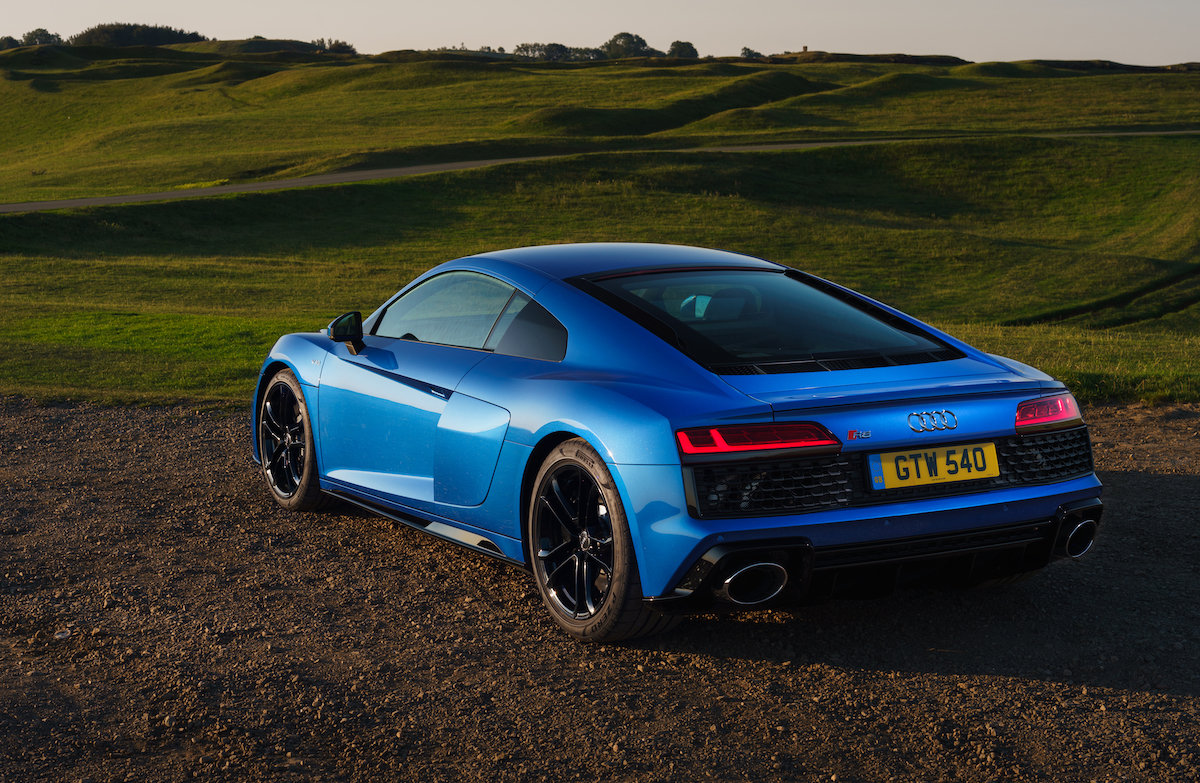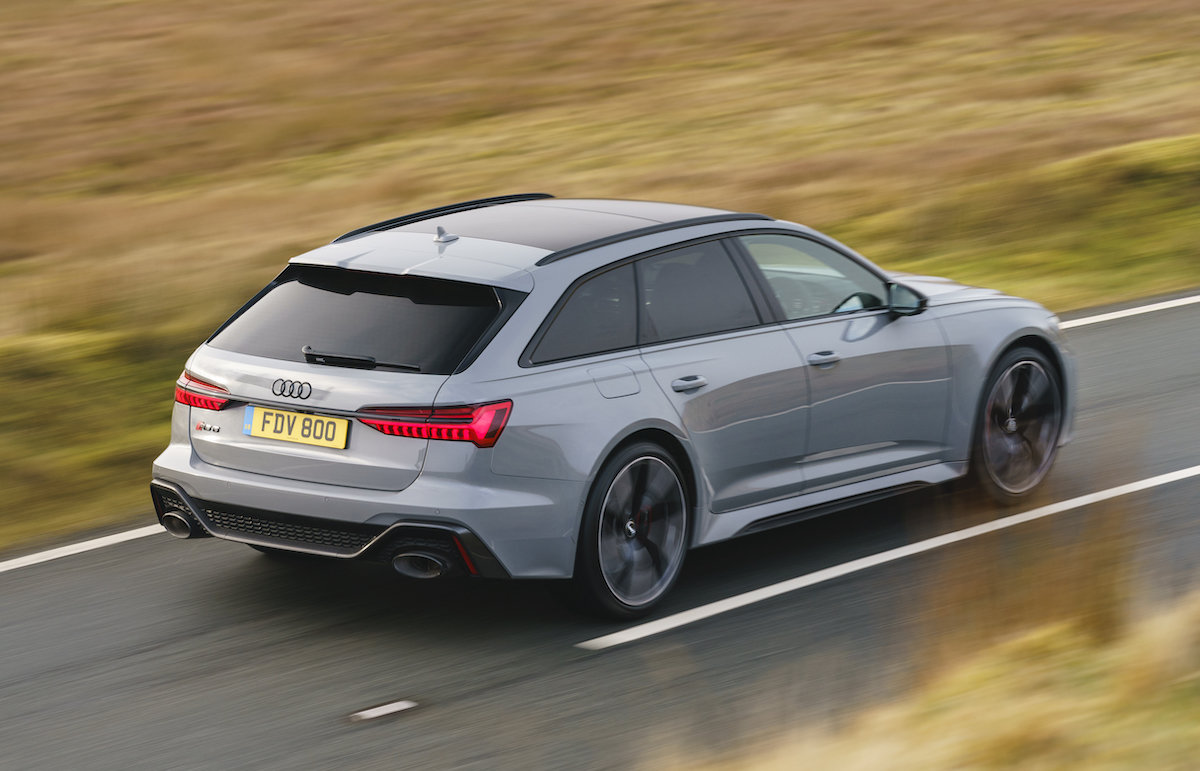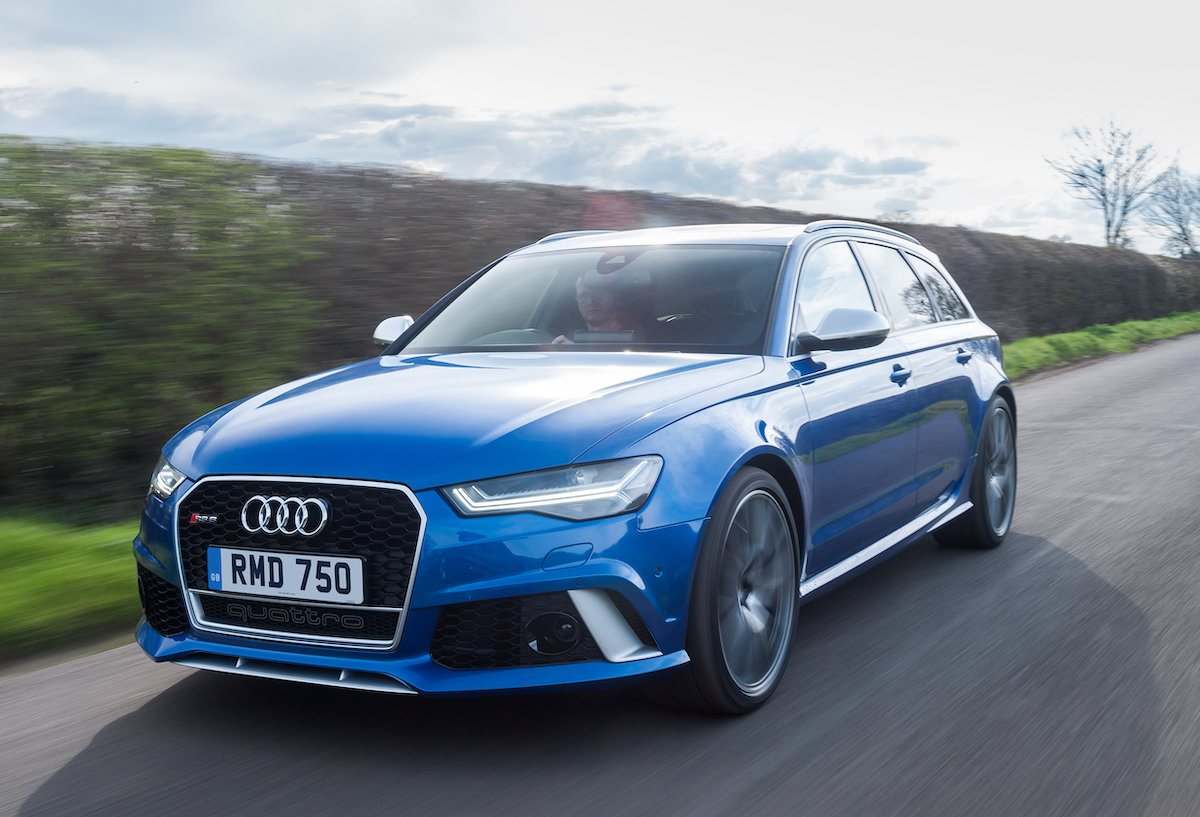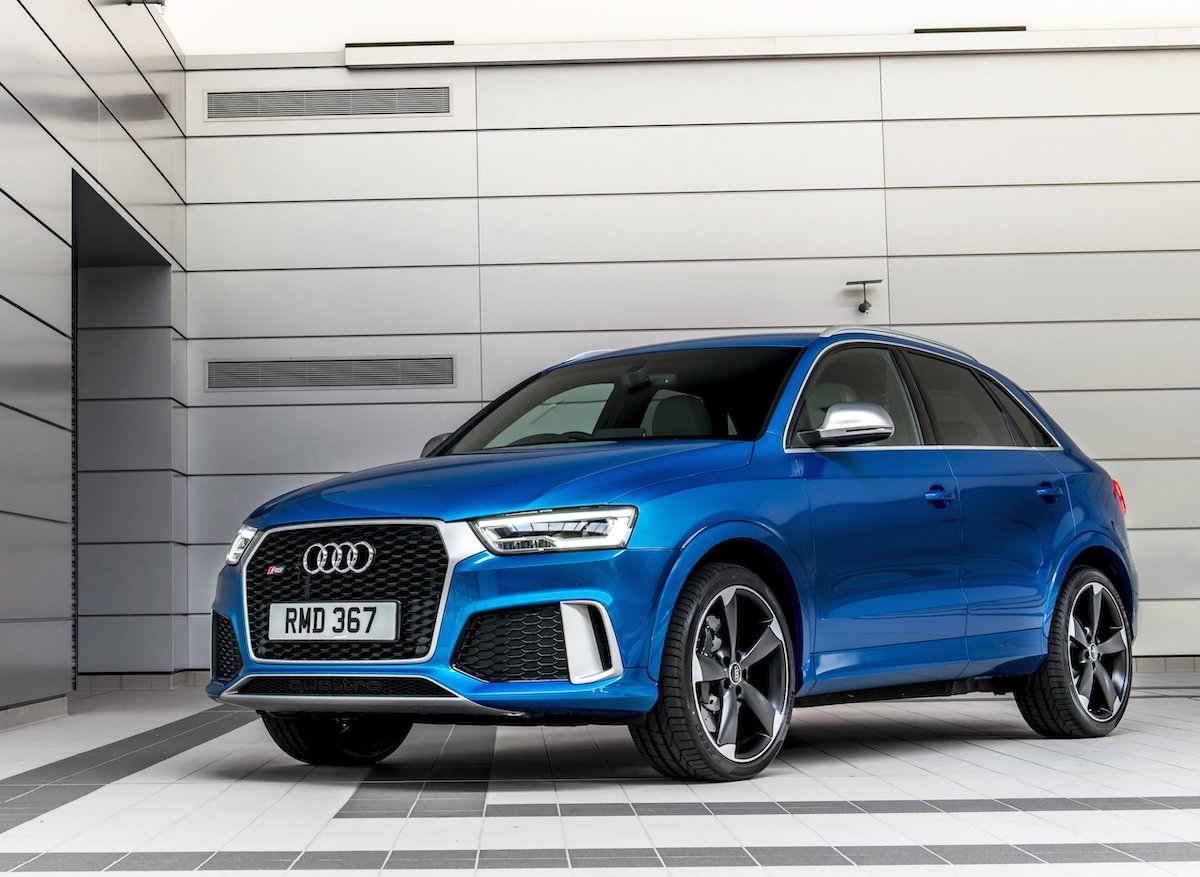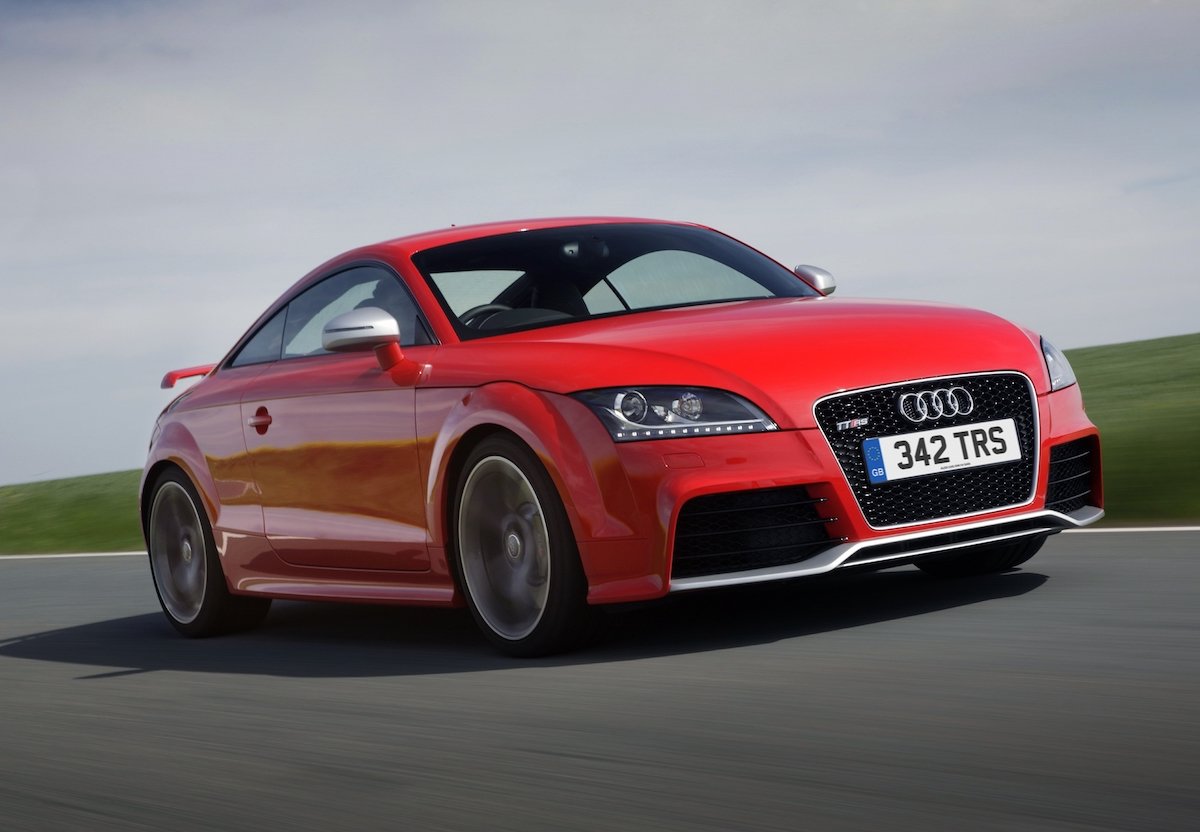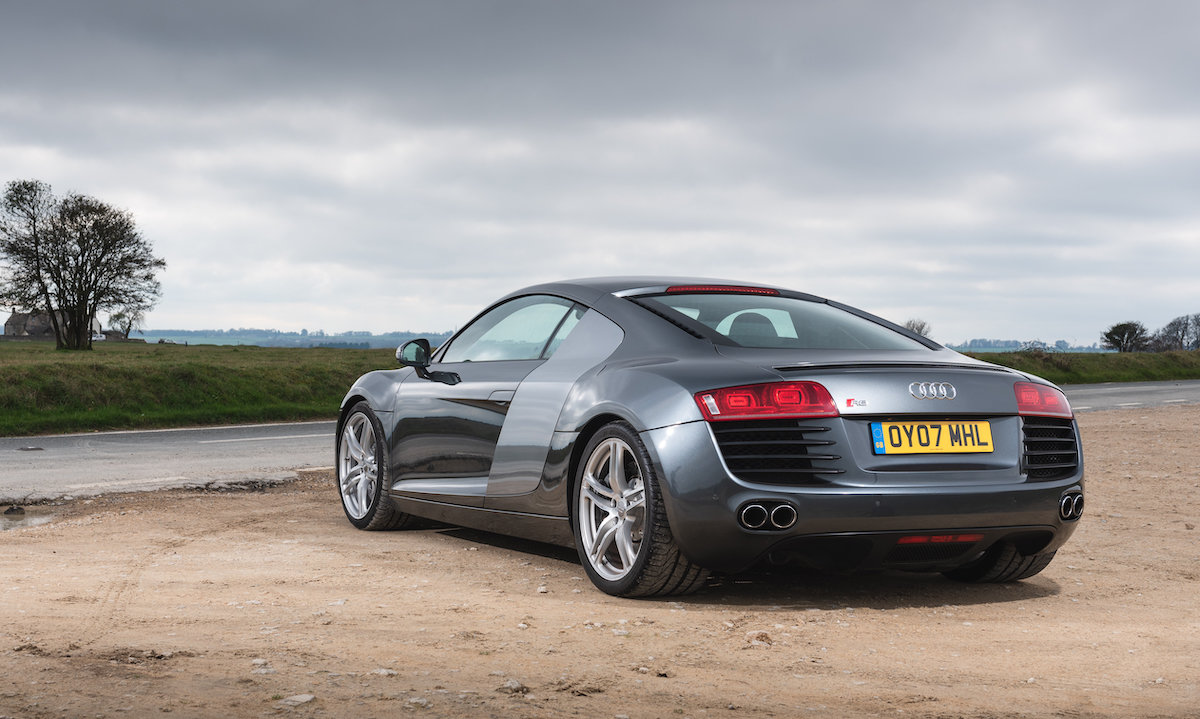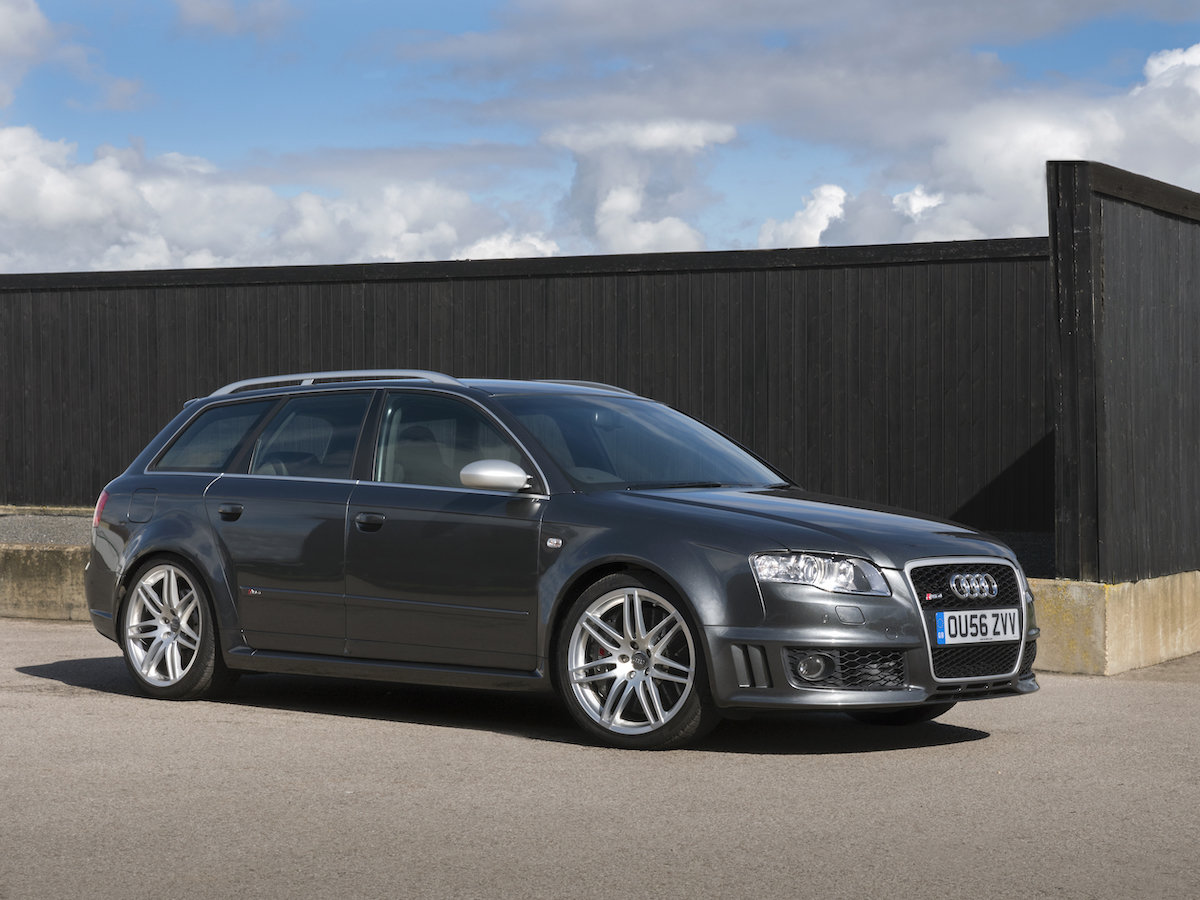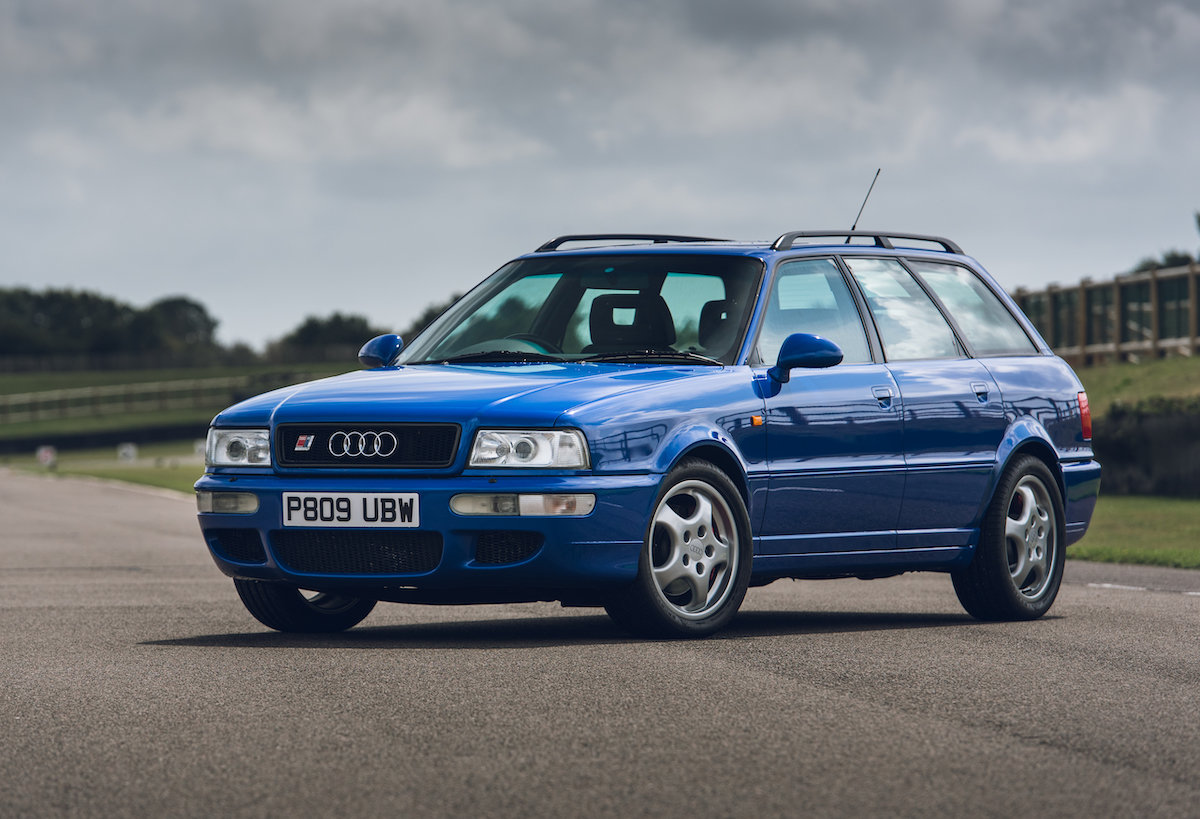Audi more or less invented the four-wheel-drive performance car in 1980 when it launched the original Quattro. Only a handful of fast Audis in the four decades since have strayed from that blueprint and powered a single axle: for the most part, wet-weather stability and flawless traction have been Audi lodestars.
The Ingolstadt company is typically at its best when building very fast estate cars, but the likes of the R8 and RS3 demonstrate it can turn its hand to performance cars of all types. Here, we give you a rundown of the best RS (or 'RennSport') cars that the firm has ever produced.
The Best Audi RS Cars Ever
- Audi RS3 (2022-present)
- Audi RS e-tron GT (2021-present)
- Audi R8 V10 RWD (2020-present)
- Audi RS6 Avant (2020-present)
- Audi RS6 Avant (2013-2018)
- Audi RS Q3 (2013-2016)
- Audi TT RS (2009-2014)
- Audi R8 V8 (2006-2015)
- Audi RS4 (2006-2008)
- Audi RS2 Avant (1994-1995)
Audi RS3 (2022-present)
The RS3 has tended to be leaden-footed and blunt to drive, but the latest version, introduced in 2022 firmly consigns those descriptions to the past. It still features the thumping, warbling turbocharged 2.5-litre five-cylinder engine that's always been the RS3's star turn, but now it's added true chassis sophistication to the mix.
Partly this is down to something called the Audi Torque Splitter, which pushes power to the outside rear wheel during cornering, making the car feel less understeery and more agile. There's also the adaptive damping (though this is only standard-fit on top-spec Vorsprung cars) which really adds nuance to the car's handling ability. But these are just two parts of an overall driving experience that feels genuinely in-depth and grown-up. It's arguably more of a satisfying car to drive than the point-and-squirt Mercedes A45 AMG, its only true rival.
You can choose between the five-door Sportback body and the four-door Saloon. Never the sharpest car of its type, but in terms of overall appeal the RS3 is up there with the best.
Audi RS3 Review
Audi RS e-tron GT (2021-present)
The Audi RS e-tron GT is very closely related to the exceptional Porsche Taycan. This all-electric RS uses two motors, which between them produce just a little under 600bhp, to slingshot Audi’s first RS-badged EV to 62mph in just 3.3 seconds.
Like the Taycan it uses an 800-volt electrical architecture, which means its batteries can be charged much more quickly than those of a typical electric car. The real-world range is limited to around 250 miles, meaning the RS e-tron GT won’t work for everybody. Knockout styling and a first-rate cabin, however, will have plenty of buyers clamouring to get their hands on one.
Audi e-tron GT Review
Audi R8 V10 RWD (2020-present)
Audi built its brand on four-wheel drive technology. The word Quattro has become as much a part of the company’s identity as its four-ring logo, and yet one car on this list powers only two of its wheels rather than the full set.
The second-generation R8 is a fearsomely accelerative and supremely capable machine, but it lacks the poise and delicacy that made the original such a bewitching car to drive. The R8 V10 RWD, however, is the exception. Without four-wheel drive, adaptive dampers and dynamic steering, the RWD is far simpler than other variants and more rewarding to drive as a result. What’s more, its 5.2-litre V10 is a real showstopper.
The RWD picks up where the limited edition RWS left off. Also rear-wheel drive, the RWS was a more engaging kind of R8 because of its relative simplicity. Only 999 examples were built in total, split between coupe and roadster body styles.
Audi R8 Review
Audi RS6 Avant (2020-present)
For almost 20 years the RS6 was thunderously powerful, good-looking, built to the highest standards and sure-footed whatever the weather. But only with the arrival of the C8 version in 2020 did it become genuinely rewarding to drive. A trick four-wheel drive system, a locking differential in the rear axle and four-wheel steering made the RS6 much more than just a one-dimensional point-and-squirt device.
It is true, however, that this most recent RS6 Avant has forsaken the understated design of its predecessors in favour of in-your-face styling and cartoonish proportions. You will at least be able to console yourself with what is probably the best interior of any estate car on sale today: the material quality, design and functionality are unmatched in the class.
If the cockpit doesn’t do the trick, the fearsome 4.0-litre twin-turbo V8 certainly will. The better part of 600bhp and a soundtrack that could cause avalanches on the next continent makes the RS6’s motor even more irresistible than its exquisite handling.
Audi RS6 Avant Review
Audi RS6 Avant (2013-2018)
The RS6 makes a second appearance on this list, but this time we’re acknowledging the previous shape model rather than today’s version. The C7 variant isn’t as engaging to drive as the current RS6, but it nails the super-estate thing in its own way. After all, what more could the fast-wagon buyer realistically expect than boundless traction, unimpeachable grip, massive performance, peerless luxury and subtle good looks?
In time, this RS6 may in fact be recognised as one of the most attractive super-estates there has ever been. The Performance version appeared towards the end of the C7 RS6’s life with a whisker under 600bhp, and it remains the one to look out for today. Four-wheel drive means it’ll hit 62mph in just 3.7 seconds, making it faster off the line than many mid-engined supercars. Cleverly, though, the RS6 is effortless and comfortable in normal driving, making it luxury car one moment, supercar-slayer the next.
Audi RS6 Avant Review
Search for an Audi RS6 Avant on CarGurus
Audi RS Q3 (2013-2016)
Essentially an RS3 on stilts, the RS Q3 isn’t the sort of car that would normally appeal to enthusiast drivers. But it has a supple ride and a more playful balance than its lower-set stablemate, which ultimately makes it even more entertaining to drive. The same 2.5-litre engine as the RS3 means it is frighteningly quick in a straight line, although it’s the broad-chested power delivery and bassy exhaust note that amuse more than the sheer force of the RS Q3’s acceleration.
Those in the know will spot an RS Q3 a mile off – the enormous exhaust tips, the big wheels, the body styling kit… – but to most onlookers it’s just another SUV. They’d never know this Audi 4x4 has enough power beneath its bonnet to startle BMW M-car drivers. A high-quality cabin and effortless day-to-day usability top off an already compelling package.
Audi Q3 Review
Audi TT RS (2009-2014)
The first TT RS, which was actually based on the second-generation TT, was one of only a handful of Audi performance cars to combine the company’s five-cylinder turbo engine with a manual transmission (DSG was available as an option). It isn’t truly thrilling to drive – in fact no TT has ever troubled more exotic sports cars like the Porsche Cayman in that regard – but that powertrain is enough on its own to make the TT RS a quietly appealing proposition.
With four-wheel drive and bundles of stability, it has a kind of indomitability in poor weather and a turn of pace along a challenging B-road that few cars in the class can match. Add to that a fine cabin (always a TT trump card) and handsome styling, and it’s little wonder so many owners swear by them. Ultimately, though, the TT RS shares its underpinnings with the Volkswagen Golf, which means it goes up against purpose-built sports cars like the Cayman with one arm tied behind its back.
Audi TT Review
Audi R8 V8 (2006-2015)
You can pore over an R8, turn it upside down and pick it apart piece by piece, but you won’t find a single RS logo anywhere. The R8 was designed and engineered by the same division that’s responsible for all RS Audis (formally Quattro GmbH but now called Audi Sport), though, and leaving it off a list of the best Audi performance cars on a mere technicality would have been daft.
After all, the German marque excelled itself with the original R8, which is at its best with the V8 engine and a manual gearbox, and it’s yet to scale the same heights with any successive model, be it a newer version of the R8 or anything with an RS emblem on it.
Audi’s first mid-engined sports car arrived in 2006 with the kind of ride quality, chassis balance and steering precision that we all assumed Audi simply wasn’t capable of engineering into its cars. Given that it hasn’t managed to do so again since, perhaps it was fluke.
Audi R8 Review
Audi RS4 (2006-2008)
Later RS4s are faster and more sophisticated, but the second in the series, the B7, remains the best of the lot. Whether you prefer the saloon, the estate (Avant in Audi-speak), or the convertible, the B7 looks muscular without being overtly aggressive, a nuance very much lost on more recent models.
Its 4.2-litre V8 is the same as that found in the original R8. It’s a high-revving unit rather than a torque-rich sledgehammer, which means you really have to get down the gears and chase the redline to hurry the RS4 along a road. Peak power of 414bhp arrives at 7800rpm, which is where the exhaust note rises to its stirring eight-cylinder crescendo.
Like most high-performance Audis of the time the B7 RS4 feels very nose-heavy, but four-wheel drive gave it the kind of wet-weather performance a BMW M3 driver could only dream of. Crisp steering, a comfortable ride and an exceptionally well-built cabin made the RS4 more compelling still.
Search for an Audi RS4 on CarGurus
Audi RS2 Avant (1994-1995)
The original RS Audi and one of the first performance estates. It was developed in partnership with Porsche (hence the ‘Porsche’ script on the brake callipers and the tiny, teardrop-shaped door mirrors from a 911) and was no half-hearted first effort as a result. Its 2.2-litre five-cylinder turbo engine produced 315bhp, a staggering amount of power at the time. Combined with four-wheel drive, it meant the RS2 Avant was one of the most accelerative cars on the road, and certainly the fastest vehicle capable of transporting a wardrobe. In fact, it still feels quick to this day. There is a fair degree of turbo lag and when you start flinging the RS2 around, you realise just how short on body control it really is. Better to stroke it along at pace rather than wring its neck, enjoying the oily slick gear-change, the warbling five-pot soundtrack and the bright blue interior upholstery as you do so.



